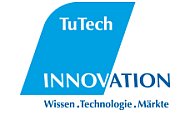|
|
Politics 2.0 – The Obama Campaign26. June 2009 – 14:11 by Centre for E-Government |
Barack Obama’s electoral campaign represents a masterpiece in online-campaigning. The use of ICTs and the creation of an Obama-brand were the key features to mobilising the masses. Obama’s opponent, senator McCain, couldn’t motivate as many people to participate in his campaign.
Barack Obama was registered on more than a dozen different social media, the main ones (Facebook, MySpace, YouTube, Twitter) included, and succeeded in forming an online community that strongly supported his goals. The online-headquarter was my.barackobama.com (MyBO) “[which] was at the heart of the campaign’s new media strategy. [… The] site allowed users to create events, exchange information, raise funds, and connect with voters in their area. MyBO was the digital home from which the campaign could mobilise its army of supporters.” [2] This portal helped creating a community with more than two million profiles. Of course, the easy-to-use website also attracted adversaries, which made community managers essential to evaluate and delete certain statements if necessary.
Citizens participate in Obama’s Campaign
The operators of MyBO established a strong sense of community as everyone with political interest could participate. In blogs, people could express themselves and report about their personal experiences during the campaign. Useful information, such as phone lists and guides for campaigning, were distributed via this internet-portal; even fund-raising-statistics of all members were included. However, the “real spirit of the community could be seen in the more than 200,000 offline events organized through MyBO.” [2]
The Obama campaign collected 13 million email addresses and sent one billion emails to mobilize its supporters. “The Obama team used email as an integral platform to engage supporters, bloggers, and online media. Often overlooked by traditional communications departments, email has one major advantage: speed.” [2] Putting email recipients into groups gave the campaign the opportunity to send individually designed messages to specific groups of people. An even faster way to communicate is SMS, which can be used to contact people without internet access, especially in rural areas.
Citizens make President independent
Obama’s blog was the centre where all news and information were displayed. “It was the hub that captured all activities in the Obamaverse and shared them with the world. The blog was the campaign’s repository, a place where stories, videos, news, and pictures were captured and pushed out to Obama’s many social network profiles.” [2] As people could participate, the campaign’s theme “Yes we can!” was emphasised. One of the Obama’s campaign stated goals was to involve people and to make them participate.
The fund-raising was well organised, and, instead of a few companies making large donations, many citizens donated small amounts of money. “3 million donors made a total of 6.5 million donations online adding up to more than $500 million. Of those 6.5 million donations, 6 million were in increments of $100 or less. The average online donation was $80, and the average Obama donor gave more than once.” [4] Even though Harfoush states different sums, one thing is for sure: Obama’s success in fund raising is based on small donations by many people. As a result, Obama’s campaign was neither dependent on financially strong lobbies nor on his party. The campaign’s activities in the Web 2.0 made Obama become a one-man-party. “Without entirely realizing it, America elected its first Independent president.” [3]
The campaign was successful because it was both consistent and authentic in all the different media used. Despite the campaign’s uniform appearance, campaign managers created a specific concept for each online-platform. Citizens could participate in the campaign; feedback was wanted, appreciated and heard. In summary, many volunteers supported and influenced Obama’s campaign and consequently led to the historic election outcome.
Sources
- Rahaf Harfoush. “Yes we did, strategic Insights from the Obama Campaign by Rahaf Harfoush.” scribd.com, 2008.
- Rahaf Harfoush. Yes We Did. An inside Look at how Social Media built the Obama Brand. New Riders: Berkeley, 2009.
- John Heilemann. “The New Politics. Barack Obama, Party of One.” New York Magazine, 01/11/2009.
- Jose Antonio Varga. “Obama Raised Half a Billion Online.” Washington Post, 11/20/2008.










1 Trackback(s)
Sorry, comments for this entry are closed at this time.